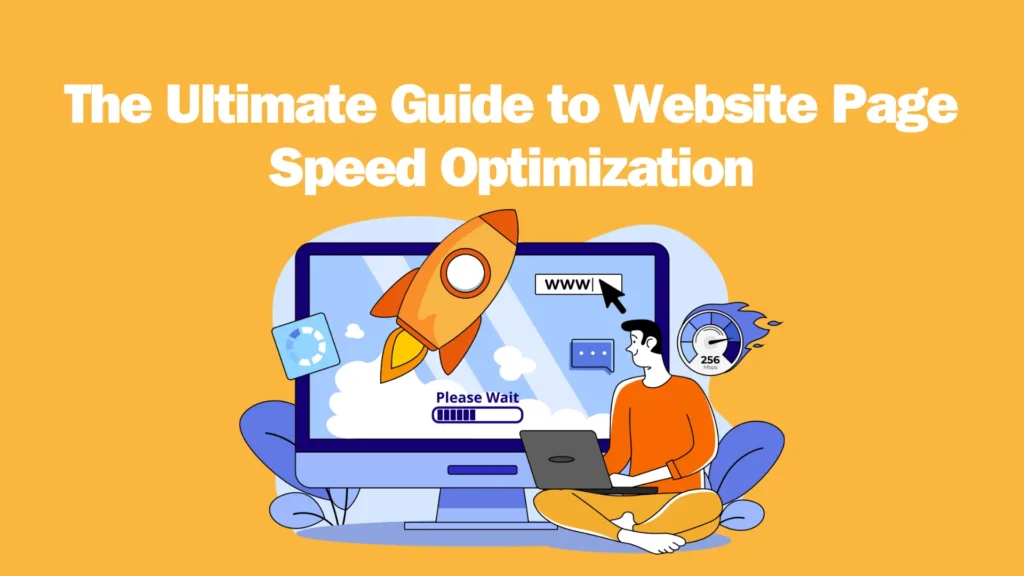
The Ultimate Guide to Website Page Speed Optimization
A fast-loading website is no longer just a nice-to-have—it’s a necessity for businesses aiming to succeed online. Website page speed has a direct impact on your search engine rankings, user experience, and conversion rates. If your site takes longer than three seconds to load, you could be losing up to 40% of potential customers.
In this ultimate guide, we’ll explore everything you need to know about website page speed optimization. We’ll cover why it’s important, common causes of slow pages, proven strategies for improvement, and the best tools to keep your site performing at its peak.
Why Conduct a Website Page Speed Test?
Website page speed tests are essential to understanding how your site performs and identifying areas for improvement. These tests provide detailed insights into what slows your site down and how to fix it.
Here’s why conducting a Website Page Speed Test matters:
- User Experience: A fast website keeps users engaged and ensures they navigate your site smoothly. A website page speed test can reveal whether slow load times are affecting this experience.
- SEO Rankings: Google prioritizes fast-loading websites, making page speed a crucial ranking factor. Using a website page speed test ensures your site is optimized for search engines.
- Conversions: Faster websites convert better. A thorough website page speed test can help you identify bottlenecks and boost your conversion rates.
Understanding Website Page Speed Metrics
Before diving into optimization strategies, it’s essential to understand the key metrics used to measure page speed. These metrics are often highlighted in a Website Page Speed Test report:
- First Contentful Paint (FCP): Measures the time it takes for the first visible element to appear.
- Time to Interactive (TTI): Indicates when a page is fully interactive.
- Largest Contentful Paint (LCP): Tracks when the main content is visible.
- Cumulative Layout Shift (CLS): Measures layout stability.
- Total Blocking Time (TBT): Tracks delays caused by scripts.
Pro Tip: Tools like Google PageSpeed Insights, GTmetrix, and Lighthouse are excellent for running a Website Page Speed Test and generating actionable recommendations.
Common Causes of Slow Website Page Speed
A Website Page Speed Test often reveals the following issues contributing to slow load times:
- Unoptimized Images: Oversized images can significantly delay page loading.
- Render-Blocking JavaScript: Scripts that delay page rendering slow down the user experience.
- Excessive HTTP Requests: Too many resource requests increase load times.
- Slow Server Response Time: Server issues directly affect loading speed.
- No Caching: Without caching, returning visitors experience longer load times.
Proven Strategies to Optimize Website Page Speed
After conducting a Website Page Speed Test, you’ll have a clearer idea of which optimization strategies to implement. Here’s how you can improve page speed:
Optimize Images
- Compress large images using tools like TinyPNG.
- Use next-gen formats like WebP for better performance.
- Enable lazy loading to reduce initial load times.
Minify CSS, JavaScript, and HTML
- Use tools to minify code and reduce file sizes.
- A Website Page Speed Test often flags bulky scripts that can be streamlined.
Enable Browser Caching
- Store static assets in users’ browsers to improve load times for repeat visits.
- Adjust caching settings based on insights from your Website Page Speed Test.
Use a Content Delivery Network (CDN)
- A CDN reduces latency by serving content from the nearest server.
- CDNs often work in conjunction with recommendations from a Website Page Speed Test.
Reduce Server Response Time
- Choose reliable hosting and optimize server configurations.
- Address server-related issues flagged in your Website Page Speed Test.
Minimize Redirects
- Fix redirect chains and reduce unnecessary HTTP requests.
- Tools like Ahrefs or Screaming Frog can complement insights from your Website Page Speed Test.
Best Tools for Website Page Speed Optimization
Here are the top tools for running a Website Page Speed Test and improving site performance:
- Google PageSpeed Insights: Provides a detailed breakdown of performance metrics.
- GTmetrix: Offers comprehensive reports and actionable tips.
- Pingdom: Tests site speed from various global locations.
- WebPageTest: Delivers advanced analysis, including video captures.
- Lighthouse: A Chrome extension for performance audits.
Mastering Website Page Speed Optimization
Optimizing website speed is an ongoing process, and running regular Website Page Speed Tests is key to success. By implementing the strategies above and leveraging the recommended tools, you can ensure a seamless and efficient experience for your users.
Remember, a faster website not only boosts SEO rankings but also enhances user satisfaction and drives conversions. Ready to take the next step? Contact us today for a free consultation, and let’s optimize your site together!
Stay Up To Date Subscribe To Our Latest SEO Guide
This website is created by Vic Ranci Digital Marketing
Copyright © Vic Ranci 2024. All Rights Reserved.

